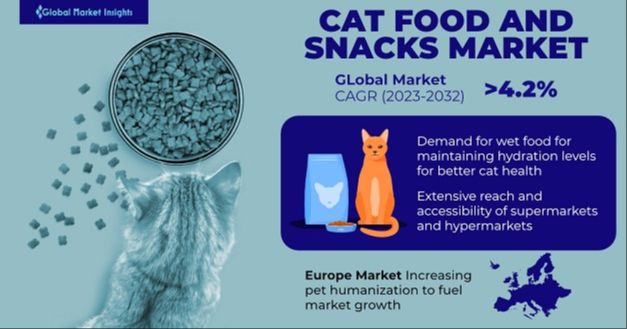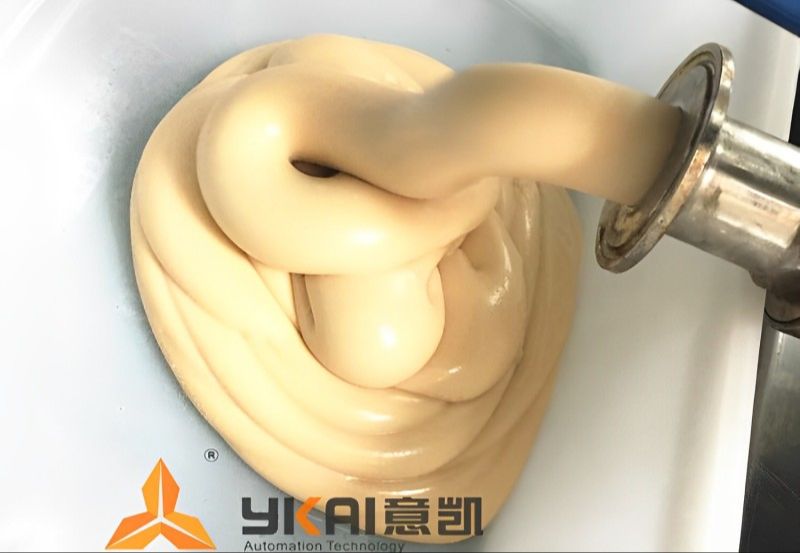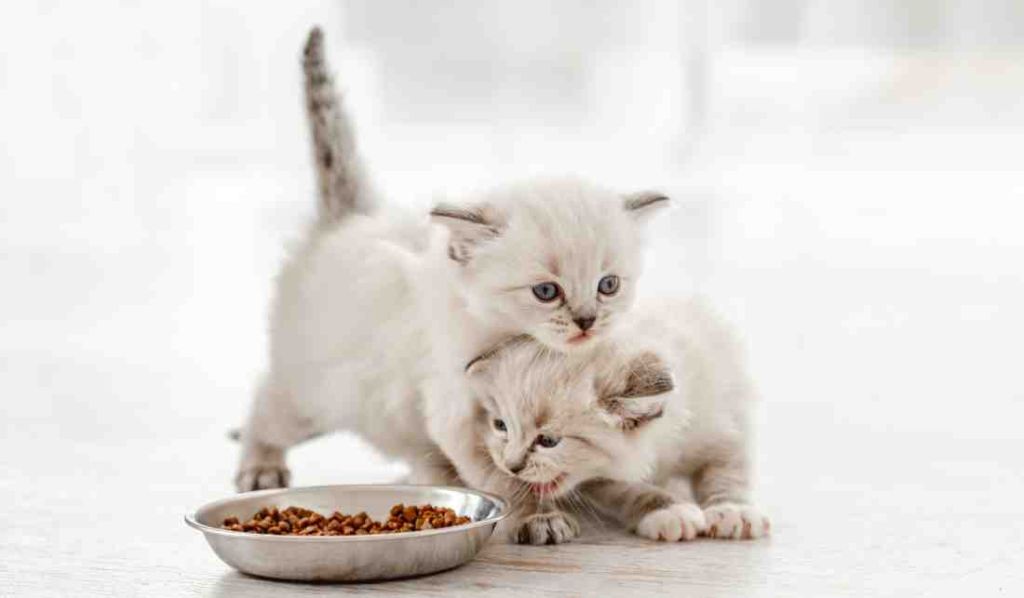The cat food industry is a major segment of the overall pet food market. In 2022, the global pet food market was valued at over $120 billion, with dog and cat food accounting for over 85% of the market. The cat food segment specifically was worth around $45 billion globally in 2023, according to Future Market Insights.
North America is the largest regional market for cat food, accounting for over 40% of global sales. Within the US, which makes up the majority of the North American market, the top 5 cat food brands by market share are Purina (29%), Mars (17%), J.M. Smucker (8%), Hill’s (7%), and Blue Buffalo (6%) [1]. Private label and other brands make up the remaining 25% share.
The cat food market is expected to continue growing at around 4-5% annually over the next decade, driven by premium and natural pet food trends, humanization of pets, and new product development. Key players are focused on innovation, health-focused formulations, and marketing campaigns aimed at pet owners.
Ingredients

Most commercial cat foods contain a variety of ingredients to provide balanced nutrition for cats. Common ingredients include meat, meat by-products, grains, vegetables, fruits, supplements, and additives.
Meat is a key ingredient in cat food. Chicken, beef, turkey, lamb, fish, and pork are commonly used to provide protein. Meat meals, meat by-products, and animal digest are also sources of meat protein in commercial cat food.
Grains like corn, wheat, rice, and oats are inexpensive carbohydrate sources. They also add texture to dry kibble. Vegetables like carrots, peas, and potatoes provide vitamins, minerals, and fiber.
While meat should be the main ingredient, grains and vegetables make cat food nutritionally complete and balanced for the normal cat.
Meat preparation
The meat used in cat food usually comes from animals slaughtered specifically for pet food manufacturing. The animals, like cows, chickens, lamb and fish, are processed in facilities that adhere to standards for hygiene and humane treatment. After slaughter, the carcasses are transported to pet food facilities for further processing.
The meat goes through various stages of cleaning and preparation before it is ready to be used in cat food. This includes removing bones, feathers, scales and intestines. The meat is then ground into smaller chunks or a paste according to the recipe requirements. Sometimes the meat is pre-cooked or rendered at this stage through heating methods like boiling, baking or steaming. This helps eliminate bacteria and pathogens. According to MadeHow, rendering is often done by outside companies before the meat is shipped to pet food manufacturers [1].
The meat needs to be properly processed to make it safe and digestible for cats. Proper handling, grinding, cooking and storage of the meat ingredients ensures the final cat food product is nutritious and free of harmful microbes.
Mixing
The ingredients are combined in large industrial mixing vats. The dry ingredients like grains and meat meals are added first and mixed thoroughly to ensure even distribution. Liquids like fats, oils, and water are then added slowly while the mixture continues mixing. Adding liquid ingredients too quickly can cause clumping. The mixing process takes 30-90 minutes depending on batch size to ensure homogeneity. Some key points about the mixing process:

According to https://www.petfood.express/how-to-mix-and-match-for-the-perfect-pet-food/, mixing multiple ingredients creates a balanced diet. Combining a high-quality kibble with wet food and water provides complete nutrition for pets.
As noted in https://www.hsnt.org/post/5-dos-and-don-ts-for-mixing-your-pet-s-food, it’s important to consult a veterinarian before changing a pet’s diet by mixing foods. Gradual transitions over 5-7 days are recommended.
Industrial mixing vats thoroughly blend ingredients to achieve an even distribution and consistency throughout the batch before the mixture moves to the next processing step.
Extruding
After the ingredients have been mixed, the dough is pushed through an extruder machine to shape it into kibbles. Extruders are made up of one or two augers (screws) inside a metal barrel. As the auger rotates, it pushes the dough through holes in an extrusion die plate at the end of the barrel.

The size and shape of the holes determine the size and shape of the kibbles. Typical extruded cat food kibbles are small cylinders or star, fish, or letter shapes. The extrusion process cooks and expands the dough, forming the kibble’s porous internal structure.
Extruders allow cat food manufacturers to produce kibbles with a consistent size, shape, density, and texture. The cooking, shearing, and shaping that occurs in the extruder helps to gelatinize starches, denature proteins, and sterilize the food (Source).
Drying
After the raw kibble has been extruded and cut to the appropriate size and shape, it contains a high amount of moisture, around 30%. To create a shelf-stable dry kibble, the pieces need to go through a drying process to reduce the moisture content to around 10%.
There are generally two main methods for drying cat food kibble:
-
Air drying: The kibble is placed on trays and into large temperature- and humidity-controlled ovens. Warm, dry air is circulated through the kibble trays, slowly evaporating the moisture. Air drying typically takes around 25 minutes to achieve the target 10% moisture content.
-
Vacuum drying: The kibble is placed in a sealed vacuum chamber. The air pressure is lowered, causing the water in the kibble to boil off at much lower temperatures than normal atmospheric pressure. Vacuum drying is faster than air drying, but requires more expensive equipment. It can reduce drying time to around 15 minutes.
Once the drying process has finished, each batch of kibble will be tested to ensure the moisture level meets the 10% specification for dry cat food. This preserves freshness and prevents spoilage during storage and transport.
Coating
After kibble pieces are dried, they move on to a coating application system. This system coats the kibble with fats, oils, and palatant spray to enhance flavor and aroma. Fats like animal fat provide energy and essential fatty acids, while also improving palatability. Oils like fish oil supply omega-3 fatty acids. Palatants are another key coating ingredient that makes the food more enticing through taste and smell.
There are powder and liquid palatants that contain proteins, fats, and finely processed meats designed to optimize flavor. According to Appetizer Blog, powder and liquid palatants applied to the surface help maximize palatability and appeal. Ingredients like citric acid combined with amino acids and fat have a synergistic effect, as noted in this pet food patent. The palatants can be mixed together or added separately in the coating process.
As highlighted by Food Coating, pet food coatings allow the manufacturer to influence aroma, taste, appearance, and product performance. Coatings enhance the eating experience for pets while also serving nutritional purposes.
Packaging
Once the cat food has been extruded and dried, it moves to the packaging stage. This is an important step to preserve freshness and prevent contamination. The most common packaging formats for cat food are bags and cans.
For bag packaging, the dried kibbles are transported via conveyor belts into automatic weighing and bagging machines. These machines accurately measure out the desired amounts of food and deposit it into plastic bags, which are then heat sealed. Some bags have zip closures or slider closures for resealing after opening. The bags come in different sizes like 3 lbs, 7 lbs, 15 lbs depending on the target consumer. The filled bags are packed into cardboard boxes for distribution.
For canned cat food, the canned meat mixtures are pumped into empty steel cans on an automated filling line. An inert gas like nitrogen may be added to the cans to help preserve freshness. The cans are sealed and then sterilized by heating to high temperatures to kill any bacteria. The sealed cans are packaged into cardboard boxes, each containing 6, 12 or 24 cans for distribution. Proper packaging helps ensure the safety, freshness and nutritional value of the cat food.
According to Optimeal’s website, they have adopted new sustainable packaging for their dry cat food made from plant-based bioplastic. This helps reduce plastic waste and the carbon footprint of their products.
Quality Control
Quality control is a critical part of the pet food manufacturing process to ensure the nutrition, safety and consistency of the final product. Cat food manufacturers routinely test samples at various stages of production to verify the product meets specifications.

Once the ingredients are mixed, samples are tested to confirm the nutritional adequacy, verifying the food contains the right proportions of protein, fat, fiber, vitamins and minerals according to product labels and formulations. Samples are also examined for potential contaminants and toxins that could harm pets such as salmonella, mold toxins, heavy metals and pesticide residues [1]. Further safety tests may screen for unapproved drugs, rancidity and spoilage.
Throughout production, quality checks help detect deviations from recipes so adjustments can be made promptly. End-product testing confirms the food is wholesome, nutritionally complete and safe for cat consumption before release. With rigorous quality control testing at multiple stages, manufacturers can identify and resolve issues to deliver high-quality cat food.
Distribution
After the cat food is packaged, it enters the distribution system to be shipped to stores and customers. Distribution involves a complex supply chain and logistics network. According to Pet Food Logistics 101, most manufacturing facilities work with third-party logistics (3PL) providers that specialize in food transportation and have the proper vehicles, warehouses, and personnel to handle pet food products.
Cat food is shipped via refrigerated trucks from the manufacturing plants to distribution centers located strategically around the country. From there, deliveries are made by smaller trucks to retail stores, veterinary offices, or individual homes in the case of online orders. Temperature-controlled vehicles and warehouses help ensure product freshness and prevent spoilage.
The distribution process requires careful coordination between manufacturers, 3PL providers, retailers, and consumers to get the cat food where it needs to go efficiently. Safety checks and traceability procedures are in place throughout to maintain quality.

